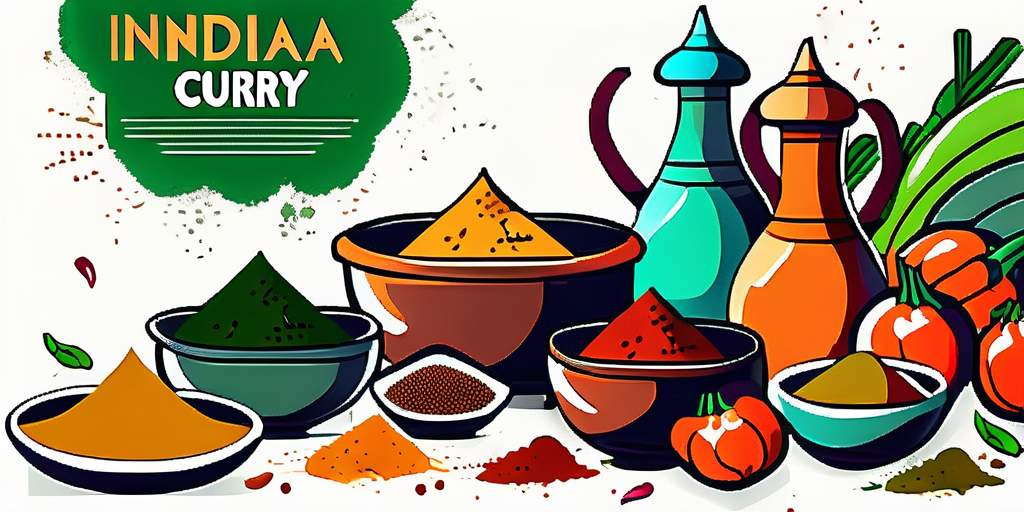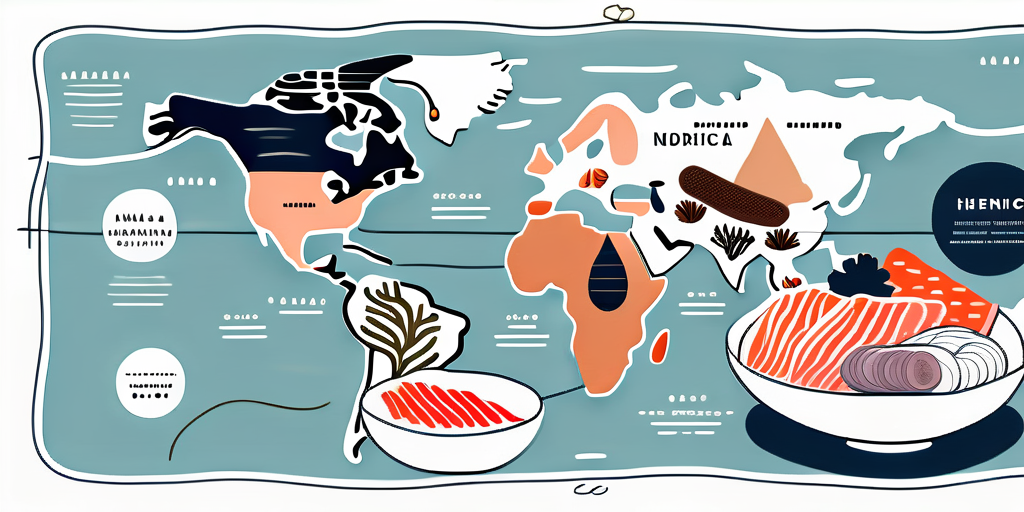In today's fast-paced world, a healthy diet is more important than ever. With the rise of modern diseases like obesity and heart disease, many people are seeking ways to improve their overall health through their food choices. While there are countless diets and eating plans available, one approach that has stood the test of time is traditional healthy cuisine from around the world. By exploring the culinary traditions of different cultures, we can glean valuable insights into what makes a diet truly nourishing and beneficial for our bodies.
Understanding the Concept of Healthy Cuisine
Before delving into the specifics of various traditional diets, it's important to have a clear understanding of what healthy cuisine entails. At its core, healthy cuisine revolves around the idea of using fresh, whole, and minimally processed ingredients. It emphasizes the consumption of nutrient-dense foods that provide a wide array of vitamins, minerals, and antioxidants. Moreover, healthy cuisine promotes balance and moderation, emphasizing the importance of portion control and mindful eating.

Defining Healthy Cuisine
Healthy cuisine can be defined as a way of eating that prioritizes foods that promote optimal health. This includes a focus on fruits, vegetables, whole grains, lean proteins, and healthy fats. It also involves minimizing the consumption of processed foods, added sugars, and unhealthy fats, such as trans fats and saturated fats.
When it comes to fruits and vegetables, healthy cuisine encourages a colorful variety. Each vibrant hue represents a different set of beneficial nutrients. For example, red fruits and vegetables, like tomatoes and watermelon, are rich in lycopene, a powerful antioxidant that may help reduce the risk of certain cancers. Leafy greens, such as spinach and kale, are packed with vitamins A, C, and K, as well as folate and iron. By incorporating a rainbow of produce into meals, individuals can ensure they are getting a wide range of essential vitamins and minerals.
In addition to fruits and vegetables, whole grains are a staple in healthy cuisine. These grains, such as quinoa, brown rice, and whole wheat, are rich in fiber, which aids in digestion and helps maintain a healthy weight. They also provide a steady release of energy, preventing blood sugar spikes and crashes. By choosing whole grains over refined grains, individuals can enjoy the benefits of increased nutrients and a reduced risk of chronic diseases, such as heart disease and type 2 diabetes.
Lean proteins, such as chicken, fish, and legumes, are another important component of healthy cuisine. These proteins are low in saturated fat and provide essential amino acids necessary for building and repairing tissues. They also help promote satiety, keeping individuals feeling full and satisfied after meals. Incorporating a variety of lean proteins into meals ensures a well-rounded intake of nutrients and supports overall health.
When it comes to fats, healthy cuisine focuses on incorporating healthy fats, such as those found in avocados, nuts, and olive oil. These fats are rich in monounsaturated and polyunsaturated fats, which have been shown to improve heart health and reduce inflammation in the body. They also aid in the absorption of fat-soluble vitamins, such as vitamins A, D, E, and K. By choosing healthy fats over unhealthy fats, individuals can support their cardiovascular health and overall well-being.
The Role of Traditional Cuisine in Health
Traditional cuisine plays a vital role in promoting health as it has been developed over generations and is typically rooted in region-specific ingredients and cooking methods. These cuisines often incorporate local produce, spices, and cooking techniques that have been passed down through families for centuries. This connection to heritage and cultural practices not only adds depth to the culinary experience but also contributes to the overall well-being of individuals following these diets.
For example, Mediterranean cuisine, which is renowned for its health benefits, is characterized by the abundant use of olive oil, fresh fruits and vegetables, whole grains, and lean proteins. This diet has been associated with a reduced risk of heart disease, certain cancers, and cognitive decline. The traditional Japanese diet, on the other hand, emphasizes the consumption of fish, seaweed, tofu, and fermented foods. This diet is known for its high omega-3 fatty acid content and has been linked to a lower risk of heart disease and longer life expectancy.
By embracing traditional cuisine, individuals can not only enjoy delicious and culturally rich meals but also reap the health benefits associated with these time-tested dietary patterns. Traditional diets often emphasize the importance of communal eating, where meals are shared with family and friends, fostering social connections and promoting overall well-being.
Overall, understanding the concept of healthy cuisine goes beyond simply knowing what foods to eat. It involves appreciating the importance of fresh, whole, and minimally processed ingredients, as well as the role of traditional cuisines in promoting health. By incorporating these principles into our daily lives, we can embark on a journey towards optimal well-being and a lifelong love for nourishing and delicious food.
The Mediterranean Diet: A Blend of Taste and Health
One of the most widely studied and acclaimed traditional diets is the Mediterranean diet. Originating from the countries bordering the Mediterranean Sea, this diet is renowned for its numerous health benefits and delicious flavors.
The Mediterranean diet is not just a way of eating, but a lifestyle that promotes overall well-being. It emphasizes the consumption of fresh, whole foods that are rich in nutrients and low in processed ingredients. This diet encourages individuals to savor their meals, taking time to enjoy the flavors and textures of each dish.
Key to the Mediterranean diet are the abundant use of fresh fruits and vegetables. These colorful and vibrant produce not only add a burst of flavor to meals, but they are also packed with essential vitamins, minerals, and antioxidants. From juicy tomatoes and crisp cucumbers to sweet oranges and tangy lemons, the Mediterranean diet celebrates the natural bounty of the earth.
Key Ingredients of the Mediterranean Diet
The Mediterranean diet is centered around fresh fruits, vegetables, legumes, whole grains, fish, and olive oil. These key ingredients provide a plethora of vitamins, minerals, fiber, and healthy fats.
Legumes, such as chickpeas and lentils, are a staple in Mediterranean cuisine. They are not only a great source of plant-based protein but also rich in dietary fiber, which promotes digestive health and helps maintain a healthy weight. Whole grains like quinoa, bulgur, and brown rice are also commonly consumed, providing a steady release of energy and essential nutrients.
When it comes to fats, the Mediterranean diet favors the use of olive oil. This golden elixir is not only a flavorful addition to dishes but is also rich in monounsaturated fats, which have been shown to improve heart health and reduce inflammation in the body.
Health Benefits of the Mediterranean Diet
Research has shown that following the Mediterranean diet can reduce the risk of heart disease, certain cancers, and neurodegenerative diseases. This eating pattern is also associated with improved cognitive function, weight management, and overall longevity.
One of the reasons why the Mediterranean diet is so beneficial for heart health is its emphasis on fish consumption. Fatty fish like salmon, sardines, and mackerel are rich in omega-3 fatty acids, which have been shown to lower blood pressure, reduce triglyceride levels, and decrease the risk of abnormal heart rhythms.
Moreover, the Mediterranean diet encourages the consumption of antioxidant-rich foods, such as berries, nuts, and dark leafy greens. These antioxidants help protect the body against oxidative stress and inflammation, which are underlying factors in many chronic diseases.
Another noteworthy aspect of the Mediterranean diet is its promotion of social connections and mindful eating. In Mediterranean cultures, meals are often shared with family and friends, creating a sense of community and fostering positive mental health. Additionally, the practice of savoring each bite and eating slowly allows individuals to better recognize their hunger and fullness cues, promoting healthier eating habits and weight management.
The Japanese Diet: Longevity and Wellness
Another traditional diet that has gained considerable attention for its health-promoting properties is the Japanese diet. Japan has one of the highest life expectancies in the world, and their cuisine is often credited as a contributing factor.
The Japanese diet is not only known for its delicious flavors but also for its numerous health benefits. It is a well-balanced and nutritious way of eating that has been passed down through generations. Let's dive deeper into the fascinating world of the Japanese diet and explore its key components.
The Basics of the Japanese Diet
The Japanese diet focuses on fresh seafood, rice, vegetables, soy products, and green tea. These staple foods form the foundation of their meals and provide a wide range of essential nutrients.
Seafood, such as fish and shellfish, is a significant part of the Japanese diet. It is rich in omega-3 fatty acids, which are known for their heart-healthy benefits. These fatty acids help reduce inflammation, lower blood pressure, and improve overall cardiovascular health.
Rice, another essential component, is a great source of energy and provides a steady release of glucose throughout the day. It is also gluten-free, making it suitable for individuals with gluten sensitivities or celiac disease.
Vegetables play a crucial role in the Japanese diet, with a wide variety being consumed daily. From leafy greens like spinach and kale to root vegetables like daikon and sweet potatoes, the Japanese incorporate an array of colorful and nutrient-dense vegetables into their meals.
Soy products, such as tofu and miso, are also prominent in the Japanese diet. These plant-based protein sources are low in saturated fat and cholesterol, making them a healthy alternative to animal-based proteins.
Green tea, a popular beverage in Japan, is known for its antioxidant properties. It contains catechins, which help protect cells from damage and support overall well-being.
Health Advantages of the Japanese Diet
Studies have shown that the Japanese diet is associated with a lower risk of heart disease, certain types of cancer, and metabolic disorders. The emphasis on plant-based foods and portion control contributes to weight management and overall well-being.
The high consumption of fish in the Japanese diet has been linked to a reduced risk of heart disease. The omega-3 fatty acids found in fish help lower triglyceride levels, reduce blood clotting, and improve blood vessel function.
Furthermore, the abundance of vegetables in the Japanese diet provides a wide range of vitamins, minerals, and antioxidants. These nutrients help strengthen the immune system, protect against chronic diseases, and promote healthy aging.
The portion control aspect of the Japanese diet is also noteworthy. The Japanese practice mindful eating, savoring each bite and stopping when they feel satisfied but not overly full. This practice helps prevent overeating and promotes a healthy weight.
In addition to its physical health benefits, the Japanese diet is also known to have positive effects on mental well-being. The consumption of green tea, for example, has been associated with improved cognitive function and a reduced risk of neurodegenerative diseases like Alzheimer's.
Overall, the Japanese diet offers a holistic approach to nutrition and wellness. Its emphasis on fresh, whole foods provides a wide range of nutrients that support longevity and overall health. By adopting some of the principles of the Japanese diet, individuals can incorporate healthier eating habits into their own lives.
The Indian Vegetarian Diet: A Symphony of Spices and Nutrients
India, with its diverse cultural traditions and cuisine, offers a unique approach to healthy eating through its vegetarian diet. Vegetarianism has a long history in Indian culture and is deeply rooted in religious and ethical practices.

Essential Components of the Indian Vegetarian Diet
The Indian vegetarian diet relies heavily on a variety of whole grains, legumes, vegetables, fruits, dairy products, and a vast array of aromatic spices. This combination ensures a diverse intake of essential nutrients, including protein, fiber, vitamins, and minerals.
Health Impacts of the Indian Vegetarian Diet
The Indian vegetarian diet has been associated with a reduced risk of heart disease, high blood pressure, diabetes, and certain types of cancer. The generous use of spices, such as turmeric and cumin, adds not only flavor but also potential medicinal benefits.
The Nordic Diet: Embracing Seafood and Whole Grains
While often overshadowed by its Mediterranean counterpart, the Nordic diet offers a unique and healthy approach to eating. It is inspired by the traditional diets of Denmark, Norway, Sweden, Finland, and Iceland.

Core Elements of the Nordic Diet
The Nordic diet emphasizes whole grains, berries, root vegetables, sea vegetables, fatty fish, and high-quality dairy products. These ingredients provide a range of nutrients, including omega-3 fatty acids, fiber, vitamins, and minerals.
Health Perks of the Nordic Diet
Studies have indicated that following the Nordic diet can improve cholesterol levels and reduce the risk of heart disease and type 2 diabetes. The emphasis on seasonal, locally sourced foods also promotes sustainability and a connection to nature.
In conclusion, exploring traditional healthy cuisine from around the world opens up a world of possibilities when it comes to nourishing our bodies. Whether it's the Mediterranean diet, the Japanese diet, the Indian vegetarian diet, or the Nordic diet, each offers unique flavors, cultural significance, and health benefits. By embracing the wisdom of these traditional diets and incorporating their principles into our own lives, we can embark on a journey towards improved well-being and discover the true joy of nourishing our bodies with wholesome and delicious food.





